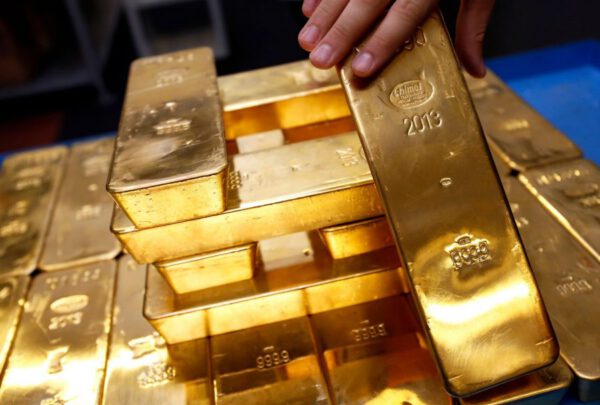
THE Bank of Ghana (BoG) has resumed the accumulation of gold reserves after exiting the business more than 60 years ago.
The central bank added US$42 million worth of gold to its reserves this year, marking a successful return to an exercise that it last conducted in 1962.
Made up of 22,643.24 ounces (oz) of the ‘yellow metal,’ the now reserve gold was mined locally but refined abroad to the standard of the London Bullion Market Association (LBMA).
The Director of the Financial Markets Department at the BoG, Steve Opata, told the Graphic Business last week in Accra that the US$42 million worth of gold now represented the first consignment of locally mined gold to be added to the central bank’s reserves since 1962.
Opata said although that was not the first time that the central bank was building gold reserves, it had not done that so since 1962.
Update
The interview was to get an update on the exercise that was launched in June 2021 with the aim of doubling the BoG’s gold reserves while supplementing and diversifying the country’s traditional ways of building reserves.
In June this year, the Vice President, Dr. Mahamudu Bawumia, said the government had granted the BoG the first right of refusal to any amount of gold mined locally before the miners could sell.
The new order, he said, was meant to ensure that the BoG used domestic resources to build its reserves in preparedness for rainy days.
Giving the Graphic Business an update, the BoG’s Director of Financial Markets said the exercise had so far been successful, with local miners cooperating quite well.
From inception to date, a total of 50 purchases have been made. The total quantity of gold purchased stands at 29,834.31 oz: 13,738.06 oz in 2021 and 16,096.25 oz as of May 2022,” Opata said.
He explained that out of the 29,834.31 oz, a total of 22,643.24 oz had been refined into monetary gold and currently under custody.
This implies that the refined gold, currently valued at approximately US$42 million, is now part of our reserves,” he added.
Until this, the BoG had largely built its reserves with proceeds from foreign loans, export earnings and grants or donor funds.
Implications
Opata said the programme was envisaged to help strengthen the bank’s reserves and stabilise the cedi against its perennial depreciation.
The levels of gold that have been acquired in relation to the domestic gold purchase programme are not likely to have a significant impact on currency depreciation. However, we could see some favourable impact on currency depreciation should the gold reserves increase significantly,” he said while noting that the ultimate goal of the programme was to shore up the reserves with a local asset.
He said that had since been achieved, albeit modestly with the addition of the US$42 million gold reserves.
He explained that it meant that the BoG had successfully shored up its gross international reserves (GIR) by US$42 million through a domestic asset.
That, he said, was in fulfillment of the bank’s agenda to diversify the sources of building reserves through the domestic gold purchasing programme that had since be backed by a legislation.
Outlook
The Director of the BoG’s Financial Markets Department said more gold reserves from domestic miners were on the way as the central bank sought innovative ways to supplement its reserve building process. The BoG aims to buy more than 617,000 oz of the gold in the next five years to help double its reserves.
Opata said the bank was aiming at purchasing a total of about 65,876.83 oz of gold this year.
The purchases as of May indicate that we are slightly below the target. However, our projections indicate that we will be able to meet the target by the end of the year, considering the plans that we have in place,” he added.
He said there were plans in place to purchase an additional 43,181.83 oz of gold by the end of 2022.
Mode of operation
Opata explained that under the programme, the gold was bought at market rates and the market rates of the dollar. Although he admitted that the depreciation of the cedi impacted negatively on the exercise, he said: “The programme has a strategic view and we are not looking too much into the movements of currencies involved.

